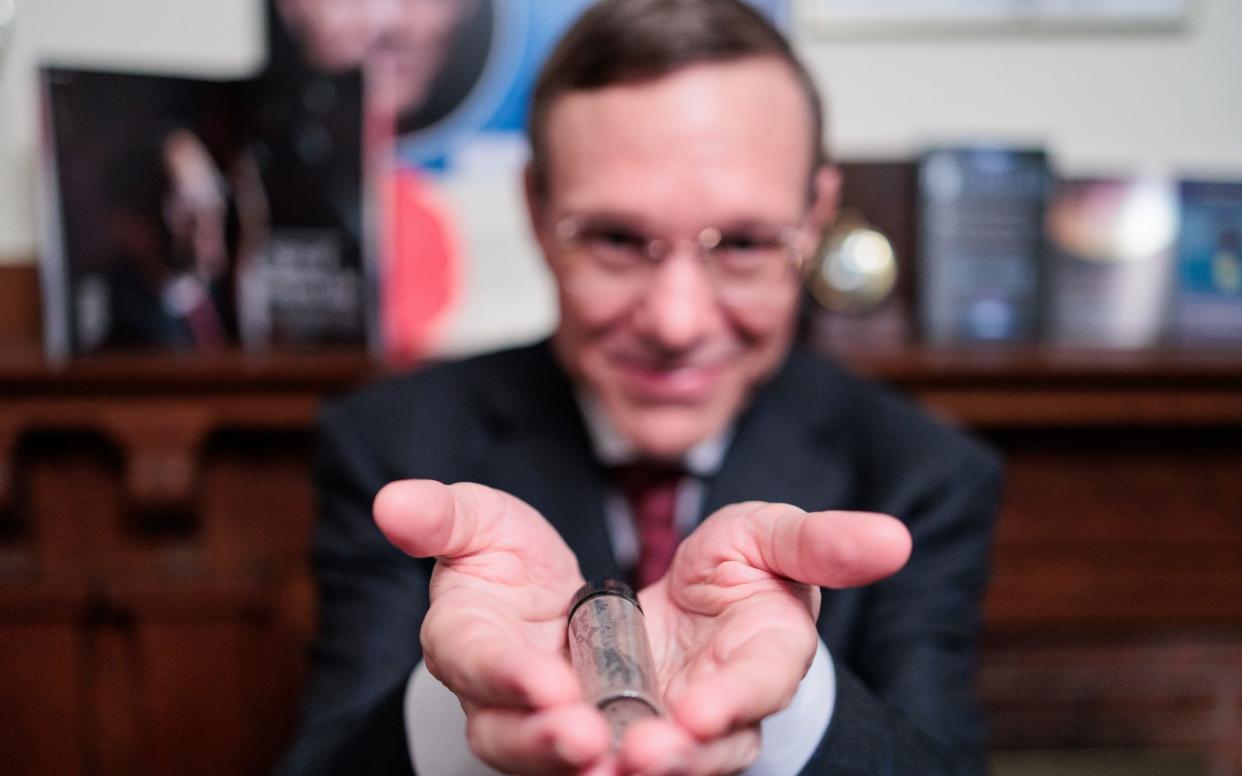Scientists at odds over ‘alien artefact’ that may be ‘dino-killer fragment’

It would be among the most extraordinary discoveries in scientific history: fragments of an alien spacecraft from another Solar System that landed on Earth.
This week Harvard astrophysicist Professor Avi Loeb said he may have made just such a find after retrieving metallic objects from the seabed where a meteorite crashed into the Pacific Ocean near Papua New Guinea in 2014.
His claim has been met with disbelief from other scientists who have offered alternative yet still extraordinary explanations for the metal spherules.
Remnants of a supernova, a shard of a distant exoplanet struck by a giant meteorite and nuclear weapons testing have all been posited as more likely explanations.
Prof Loeb says analysis of the spherules’ composition proves they came from beyond the Solar System.
However, the former chair of the Harvard Astronomy Department has yet to submit his findings to a journal for peer review.
Scientists around the world have treated his claim that he has found an alien artefact with scepticism, but still believe it may be a landmark find: the first time an interstellar object has ever been held in human hands.
Dr Phil Sutton, an astrophysicist at the University of Lincoln, agrees the metal spheres originated outside our Solar system.
The speed at which the IM1 meteorite entered the Earth’s atmosphere in 2014 (45km/second) indicates it has to be interstellar, he says. The chemical signature of the metal also indicates it was forged in a stellar nursery manifestly different to our own.
Dr Sutton is open to the possibility that they could be remnants of a spaceship, but he adds it is an unlikely possibility.
“This has come from another star and is, potentially, part of a planet from another star system,” he told The Telegraph.
“It could be a few various things. The really exotic idea is the talk about technological things that have been manufactured as opposed to natural objects.
“I am a scientist and I am also open-minded to a lot of possibilities. I don’t think you can rule out that it could be an alien spacecraft. Most people will scoff at the idea and say it is utterly ridiculous.
“It is more a very small possibility. The most likely explanation is that an object similar to what wiped out the dinosaurs here on Earth hit a planet in another star system and sent some material out from the core and magma ocean which has then melted together in the impact.
“This shrapnel could have been ejected with such force that it was moving fast enough to escape the star system it was from, perhaps aided by a slingshot from other planets. I think that that is probably the most plausible explanation.”
Yet, he argues, it is still reasonable to entertain the idea that it is a shard of an alien craft. Humans right now have the technology to send an unmanned probe to Proxima Centauri B, our nearest exoplanet around four light years away, he says, and if we can do that, perhaps another species elsewhere in the universe has already done so.
“What if another civilisation found us before we found them, and sent probes out? That in itself is perfectly plausible because that’s how we would do it, in my opinion.”
Other scientists have been dismissive of such suggestions.
Lord Martin Rees, Astronomer Royal and professor of cosmology and astrophysics at the University of Cambridge, told The Telegraph that it was best to ignore all of Loeb’s claims which “are over-hyped already”.
The objects Loeb has found could just be one of “zillions of asteroid-like objects” in interstellar space, he said, making it “interesting but unsurprising”.
“And there’s minimal justification for hype about it being ‘artificial’ – and even less for Loeb’s other claims!” added Britain’s most senior astronomer.
Prof Monica Grady, professor of planetary and space sciences at The Open University, said Loeb’s work was very detailed and interesting but is not “sufficiently convincing” to say the metal particles are definitely from the IM1 meteorite, let alone an alien spaceship.
Prof Grady suggests the retrieved particles from the Pacific Ocean could be from a supernova, or exploding star, something Loeb rejects.
She also says they could have been made on Earth as a side-effect of nuclear weapons testing.
“The Marshall Islands are only a few hundred kilometres or so from the region where Loeb searched,” she told The Telegraph.
“The Islands were the site of 67 nuclear tests by the US between 1946 and 1958, and there is still a legacy from the radiation damage caused by the tests. The spherules could be fallout from the nuclear tests – produced by a human-generated supernova.”
Prof Grady has also put herself forward to analyse the spherules herself to check if this is in fact the case.
Lord Rees’s esteemed Cambridge colleague, Prof Paul Murdin, who found the first black hole, says that although Loeb’s method is unconventional, he agrees with some of the conclusions.
The spherules are “probably interstellar” in origin, he told The Telegraph, and it is “credible” that they have a unique, extrasolar composition. The discovery has merit scientifically, he said, but is being cheapened and undermined by claims of alien technology.
“It is a very interesting scientific case. It is possibly an extrasolar planet or asteroid, which we know exists in vast quantities,” he said.
“But the question is so what? We know that our Solar System is an island in a sea of material that floats around the galaxy. This could well be a bit of galactic flotsam that has floated up to our shores.
“It is a huge leap to say that it might be an artificial spaceship. I think it is a pity to detract from the intrinsic interest of the science by overspeculating.”

